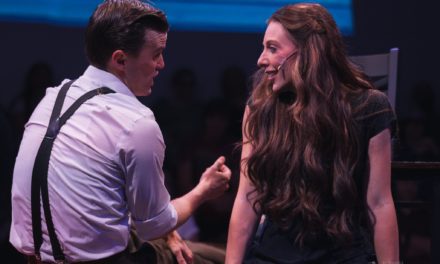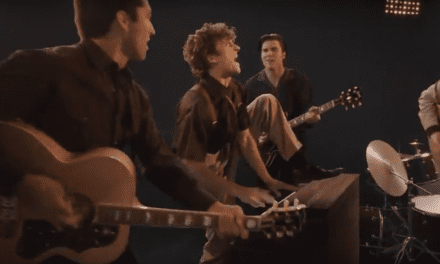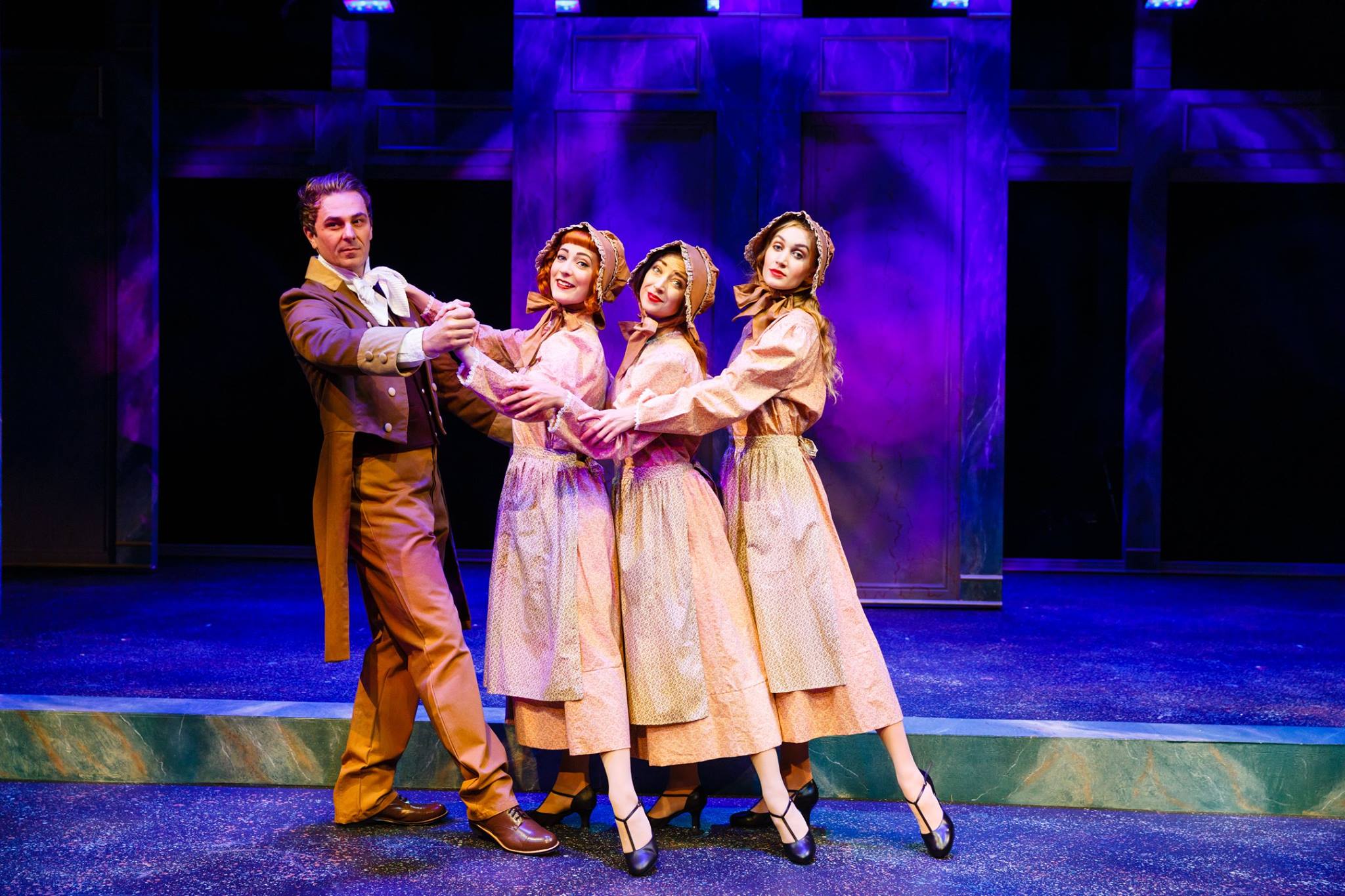CEDAR CITY – There is a first for everything, and this season’s Macbeth at the Utah Shakespeare Festival is the first time I’ve ever seen the inclusion of Hecate in the Scottish Play. Hecate is the Greek goddess of magic and witchcraft, and the two Hecate scenes in the text are almost always cut. Directed by the festival’s Artistic Director, John DiAntonio, the production in the Englestad Shakespeare Theatre didn’t just include Hecate as a side-bar, she is, as we come to learn, the master behind it all. It was a strong choice that elevated an excellent production.
Relative to other Shakespearean tragedies, the plot of Macbeth is simple; Macbeth receives prophecy from a trio of witches that he then seeks to force to come to pass through treachery and murder, leading him into a position of isolated tyranny, whereupon he is brutally defeated as the prophecy is fulfilled in unexpected ways. The play is a lesson on the dangers of unchecked ambition, power, and tyranny. Hecate’s presence adds layers of considering the supernatural impact to the play’s themes.
The stage design by Apollo Mark Weaver is dominated by a giant barren tree, toppled over to form an arch over the inner alcove, setting the mood for the dark plot about to ensue. Bare sticks frame the upper center alcove. Sound design by Lindsay Jones includes befitting industrial music, and deep rumbling thunder throughout that enhances the dark, stormy feeling of the production. Costumes by Lauren Roark are similarly effective; dark and moody with a few stunning pieces like Lady Macbeth’s fitted green dress, her deep brown velvet dressing gown, and Macbeth’s fur trimmed king’s robe.
Interestingly, the production opens not with the entrance of the three witches, but with a silent funeral procession led by the Macbeths mourning a shrouded figure draped for burial. It was unclear to me whose death was being mourned, as this is not in the well-known text. The play seminar the following day helped to clarify that this was part of DiAntonio’s vision, and the deceased was the Macbeth’s child. An attempt to reconcile seemingly contradictory elements in the later text where Lady Macbeth speaks of having nursed a child, while Macduff, after Macbeth murders his family, declares that Macbeth has no children. It was also intended to ease the audience into the witches’ entrance rather than beginning with the Weird Sisters. Although the device might have served the latter, the confusion generated by the funeral did not succeed in resolving the former contradiction.
The fight choreography by Geoffrey Kent is really well done. Both the initial battle that brings Macbeth great fortune, and the start of the final battle which leads to his fateful end, are stylized with the combatants in lines fighting invisible foes with drill-like precision. An exception to the stylized combat is the fight between Macbeth (Walter Kmiec) and Young Siward (Elijah Eliakim Hernandez) which ends in the brutal death of Young Siward by battle axe. The ultimate fight between Macbeth and Macduff is also excellently choreographed. Their intense fight includes the wielding of swords, a battle axe, and grappling with knives to great effect. The physical ability of both Kmiec as Macbeth, and especially Addison as Macduff is apparent.

Macbeth plays at the Utah Shakespeare Festival through September 4 | Photo: Copyright Utah Shakespeare Festival 2025.
The casting is excellent. Kmiec is a master of the language and his craft. His Macbeth is dark and simmering with a character arc that takes us from loyal Scottish nobleman to paranoid usurper to merciless tyrant with complete believability. The character is complex and deeply flawed, which is apparent in his language, in particular in his reaction to his wife’s death. We simultaneously see how fully he is isolated into his own mania, while the pain of the loss skims around the edges of the character’s comprehension. Lady Macbeth, played by Cassandra Bissell, is the equal of the titular character. Bissell fully develops a divergent character arc that emphasizes the effect of guilt, to which her husband seems immune.
The passionate chemistry between the two is palpable. Bissell’s Lady Macbeth is more grounded than unhinged, which allows her to build to the complete breakdown in her sleepwalking climax before her demise. Macduff, played by Lavour Addison is extremely capable with a commanding presence with an underlying vulnerability as seen in his sorrow at his wife’s murder. Kathryn Tkel as Lady Macduff is well-matched to her husband in her strong performance. DiAntonio’s concept includes more stage time for Lady Macduff, preparing the audience to feel greater outrage at her murder. Blake Henri’s short performance as the Porter is fantastic, breaking the fourth wall and some of the tension after the regicide in the prior scene. He perfectly intones the “knock knock” of his lines to elicit a “who’s there?” response from the audience, channeling the groundling interplay from Shakespeare’s time.
DiAntonio’s directing is excellent with some unusual choices. Having Fleance run and hug Macbeth suggests the deepness of the relationship Macbeth has with Banquo and his family that makes the subsequent murder all the more horrific. The freezing of the royal court to allow Banquo’s soliloquy about Macbeth’s recent coronation is effective, using the newly crowned Macbeths as backdrop to Banquo’s suspicions. The entrance of Banquo’s ghost during the dinner party is subtle and somewhat underwhelming, but having him walk on the table creates a nice visual that I wished had been somehow carried further.
A miss in the staging is the apparitions that predict Macbeth’s fate. The presence of Hecate on the upper balcony is so overwhelming, and the manifestation of the apparitions below her relatively so small, and drowning in far too much stage fog, that although the inclusion of Hecate at this point is visually stunning, there is so much going on, that the scene may fail to effectively convey the necessary plot points if you’re not paying careful attention to Hecate’s words as she voices the apparitions. After the murder of young Macduff, carrying the child off like a limp ragdoll is a terrible, but effective touch. The freeze effect is well-utilized again later when the Macduff and the English forces enter the castle while the waiting Macbeth is frozen behind them on his throne.
The most distinct and dazzling element of this production is the inclusion of Hecate. It is not an uncommon take on Macbeth to cast the witches as the real puppet-masters of the show. But this production reminds us that the witches’ power derives from Hecate herself. Hecate first enters dramatically, rising slowly on the lift from below. She is accompanied by large shadowy figures that gloriously unfold into giant black-feathered wings. Designed by Roark, the wings span probably 25 feet across the stage. Each wing is manipulated by three “minions” in breathtaking and detailed choreography by Trey Plutnicki. Hecate lambasts the witches for acting without her oversight in their toying with Macbeth. She then returns after intermission to oversee the apparitions that will lead Macbeth to his ultimate fate. Hecate appears a third time during Macbeth’s final battle with Macduff, using her power to influence the outcome and dramatically seal Macbeth’s fate.
This production is intense, fierce, and grim. Known among theatre lovers as a play so evil as to have a cursed name, Macbeth is a tragedy that plays out well. With exceptional design, visionary directing, and impeccable acting, this is one of the strongest productions Utah Shakespeare Festival has ever produced. See it.

These reviews are made possible by a grant from the Salt Lake County Zoo, Arts, and Parks program.





